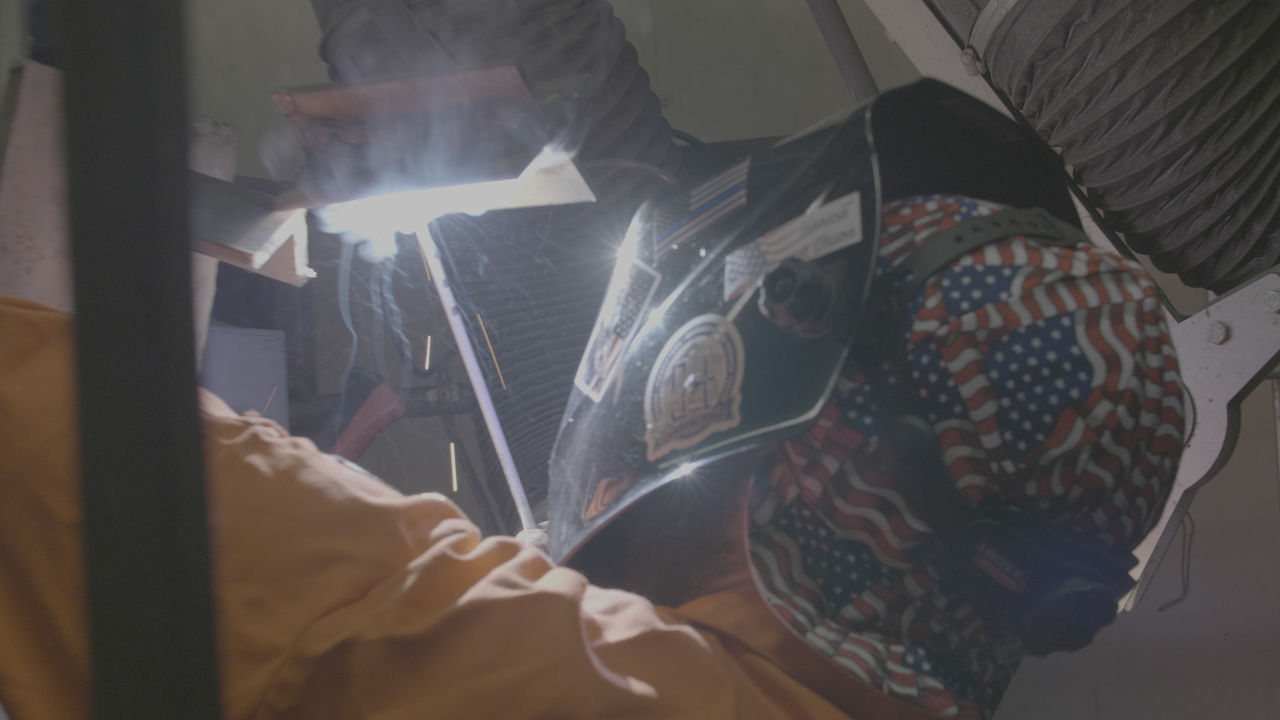Welding is critical to our country’s aging infrastructure as well as new construction, and knowledgeable welders will be needed in the field. Welders work in a variety of industries, including construction, shipbuilding, manufacturing, and aerospace.
There are more than 30 types of welding processes and techniques, but the field relies on four primary arc welding techniques. Arc welding uses intense heat to fuse metals, and our welding training program provides instruction in all four. With this background, you can enter the field as an entry-level industrial welder, welding apprentice, or check welder.
Gas Metal Arc Welding (GMAW; also known as MIG)
- The most common of all the welding processes, gas metal arc welding is also called Metal Inert Gas or MIG welding. It’s one of the easier techniques to learn and uses a hand-held torch containing an electrode wire for welding clean metals like stainless steel, aluminum, and carbon steel. The torch contains shielding gas and requires a constant direct power source, so it’s not portable.
- MIG welding is the most common technique used in the manufacturing industry but also is used in construction, automotive, plumbing, maritime repairs, and fabrication.
Flux Cored Arc Welding (FCAW)
- Flux cored arc welding is similar to MIG welding as a technique but unlike MIG, it doesn’t require a gas supply, so it’s portable. The FCAW welding gun relies on a wire electrode rather than shielding gas.
- Since it doesn’t use gas, FCAW is useful for working outdoors on constructions sites and doing work or general repairs on thicker or rusty metals (MIG welding requires very clean metal). The process produces heavy fumes and requires ventilation.
Shielded Metal Arc Welding (SMAW)
- Commonly known as “stick welding,” shielded metal arc welding is used for heavy-duty work involving iron and steel because it can weld thick metals, and it works well on rusty or dirty metals. The process relies on an electric current that flows through a rod.
- Stick welding is considered to be the easiest technique to learn, and like flux-cored welding, it doesn’t use shielding gas so it’s portable and well suited for outdoor locations. The downside of this process is the welds tend to be less durable.
Gas Tungsten Arc Welding (GTAW; also known as TIG)
- Also known as Tungsten Inert Gas, gas tungsten arc welding is considered the most challenging to learn of these four processes because it takes the most time and requires attention to detail and a steady hand. You control the current (and heat) with a foot pedal while holding the welding gun in one hand and a consumable filler rod in the other.
- TIG produces high-precision, durable welds, and is used for thin metal. The industries that rely on the superior appearance of TIG welding include aerospace, bicycle manufacturers, the automotive industry, and the pipe industry.
To learn more about welding and what our program offers, call 1-855-436-7847 to speak with an advisor today!

